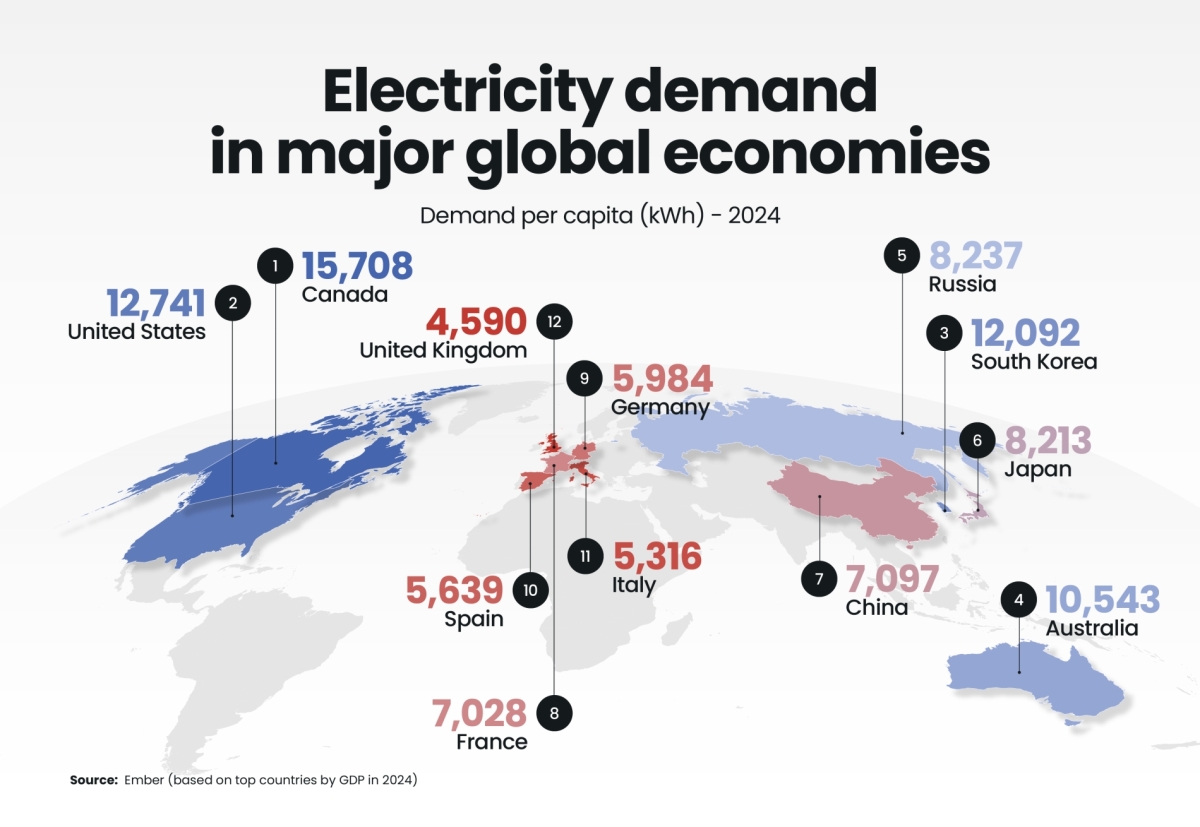As economies advance, electricity demand rises sharply, particularly in industrial and urban hubs. Higher electricity use signals economic development and modernisation, greater industrial output, higher living standards, and deeper digital integration, but also comes with a set of new challenges related to sustainability and decarbonisation.
Canada leads the world with 15,708 kWh per person in 2024, driven by mining, aluminium, and pulp industries, plus heavy heating needs during long winters. The United States follows at 12,741 kWh, reflecting energy-intensive infrastructure, widespread air-conditioning, and expanding data centres. AI adoption and cloud computing are now significant drivers of demand.
China reached 7,097 kWh per person in 2024—surpassing Germany, France, and the UK. Rapid industrialisation, urbanisation, and rising incomes explain much of this growth, while China’s leadership in AI and digitalisation adds new pressures on its power grid.
In Europe, levels are lower: Germany at 5,984 kWh and the UK at 4,590 kWh. Efficient policies, denser cities, and slower demographic growth temper demand, although the electrification of heating and transport is pushing it upward.
Developing economies like India and Mexico remain far below the global average of 3,788 kWh per person, but their consumption is expected to climb steadily.









